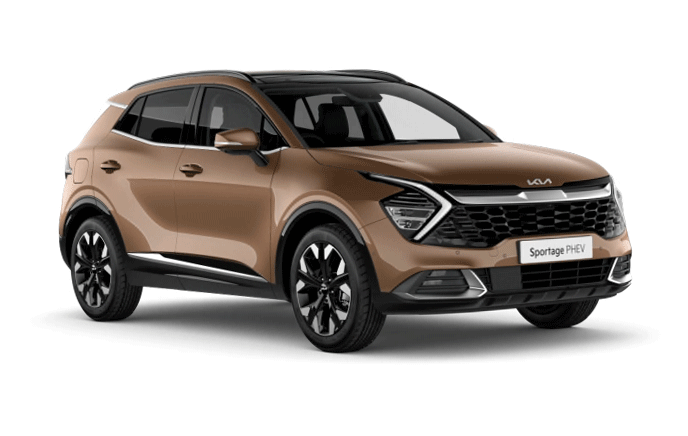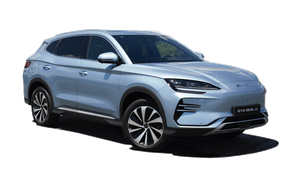Introduction and Model History
The JAECOO 7 is the first model to arrive in the UK from Chery-owned Chinese brand, JAECOO. At 4.5 metres long, it’s a mid-sized family SUV that’ll have to take on the Ford Kuga, Nissan Qashqai, Skoda Karoq, Toyota C-HR, Hyundai Kona and various other plug-in hybrid family cars. It’s not without competition, let’s put it that way!
It’s offered with a normal petrol engine, but we’re all about the plug-in power at Electrifying so we’re focussing on the ‘Super Hybrid System’ JAECOO 7 SHS. This is the fancy name for the plug-in hybrid (PHEV) version of the JAECOO 7, which gets a decent claimed WLTP electric range of 56 miles, plus a 1.5-litre turbocharged petrol engine that’ll keep you going when that’s done.
Put it all together and you get 201bhp going to the front wheels, but there’s no four-wheel drive JAECOO 7 option available with the PHEV powertrain.
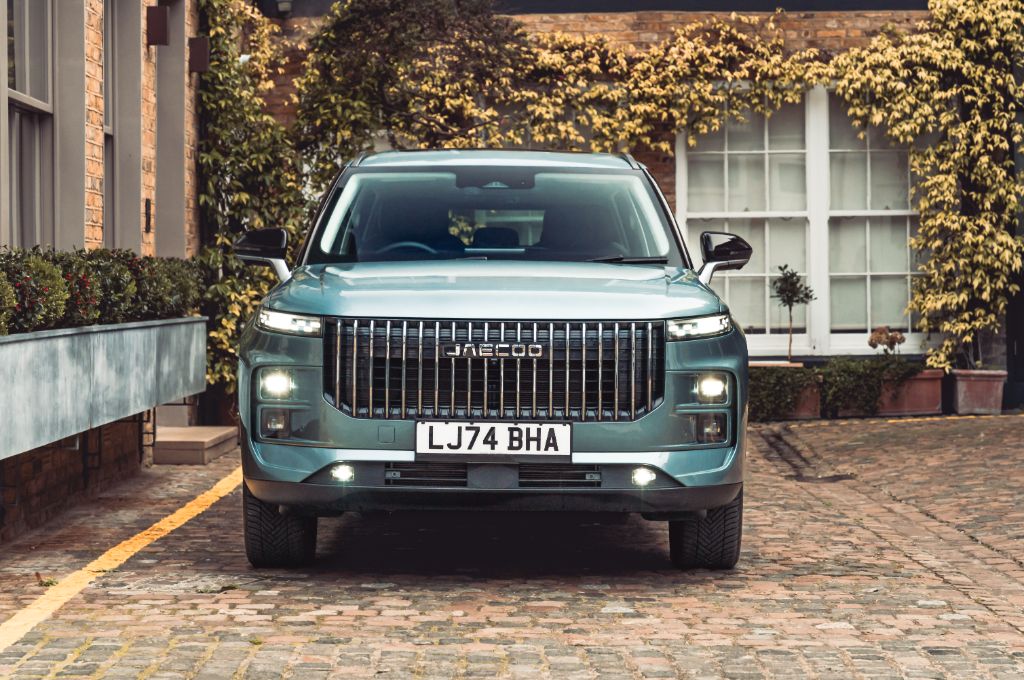
Range, Battery and Charging
Electric power comes from an 18.7kWh lithium-iron phosphate (LFP) battery, which gives the JAECOO 7 SHS plug-in hybrid a WLTP range of 56 miles. We’d expect that to be more like 45- to 50 miles in real-world use, although I’d caveat that with the fact that our brief test drive wasn’t enough to give me a very thorough idea of the JAECOO PHEV’s efficiency. It’s certainly got enough electric range to cover most people’s daily driving, and the CO2 emissions of 23g/km put it in a reasonable tax band to keep Benefit in Kind costs down for those who are running the JAECOO as a company car.
You can DC fast charge the JAECOO 7, which is impressive as a lot of its rivals only offer slower AC charging. Plug into a rapid charger via the CCS socket in the JAECOO 7’s rear wing and you can charge at up to 40kW, which is good for a 20-80% top-up in well under 20 minutes. I reckon that most people looking at this will be relying on a 7kW home charger, and the JAECOO’s peak AC charging speed is 3.3kW, which will deliver a full battery in some six- to seven hours. A standard three-pin domestic socket will do the same in around eight- to nine hours, so it may not be worth your money to install a home charger if you can easily charge up overnight from an outdoor socket.
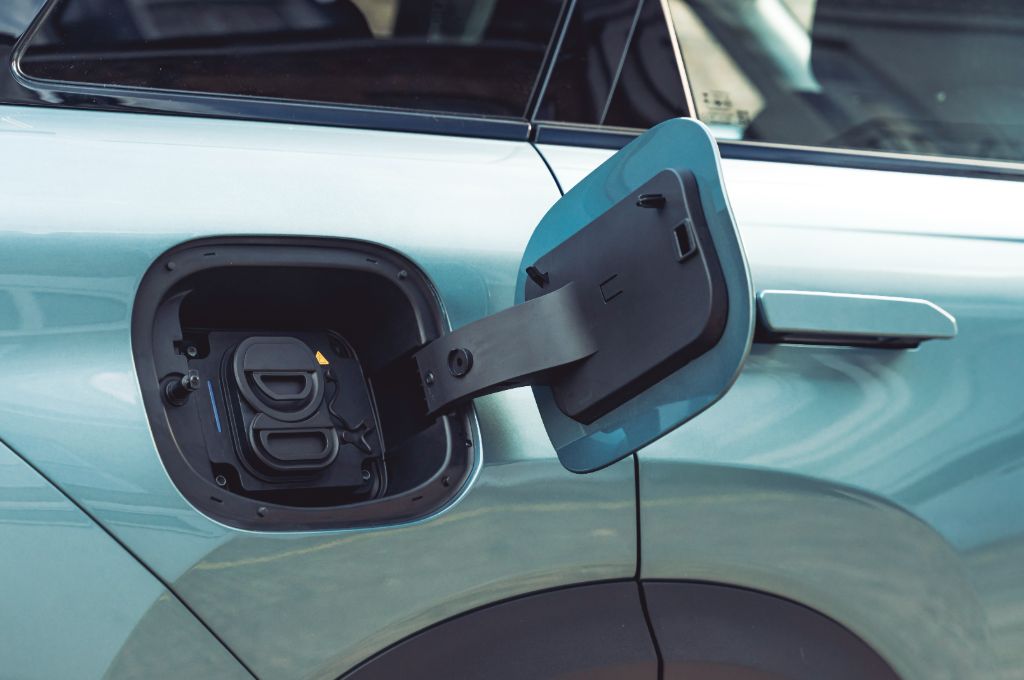
You also get vehicle-to-load (V2L) charging, complete with a three-pin socket in the boot for easy power access.
This plug-in hybrid powertrain is also rather clever, as it always retains a certain amount of battery power so that it can keep flicking into electric power. Basically, even when there isn’t enough battery power left to offer any sustained electric-only running, it’ll still flick into electric mode for brief stints – rather like a self-charging hybrid car does – to maximise efficiency.
Not sure whether to buy hybrid, PHEV or electric? Read our guide to help you decide.
Practicality and Boot Space
The JAECOO has a decent amount of space, including very roomy rear seats that have two sets of Isofix, or can seat three passengers across with a bit of a squeeze. The standard panoramic roof means that it’s nice and light back there, too, and you even get heated seats in the back, which is a very nice feature. You also get phone pockets, as well as map pockets.
The boot isn’t the most spacious, though. At 412 litres, it’s absolutely fine for every day use and will even cope with a double buggy, and the rear seats fold flat in a 60/40 split if you need them to. But there’s no underfloor space, so if you do want a really big boot with plug-in hybrid tech, the Hyundai Tucson is a great shout – albeit it a rather more expensive option than the JAECOO.
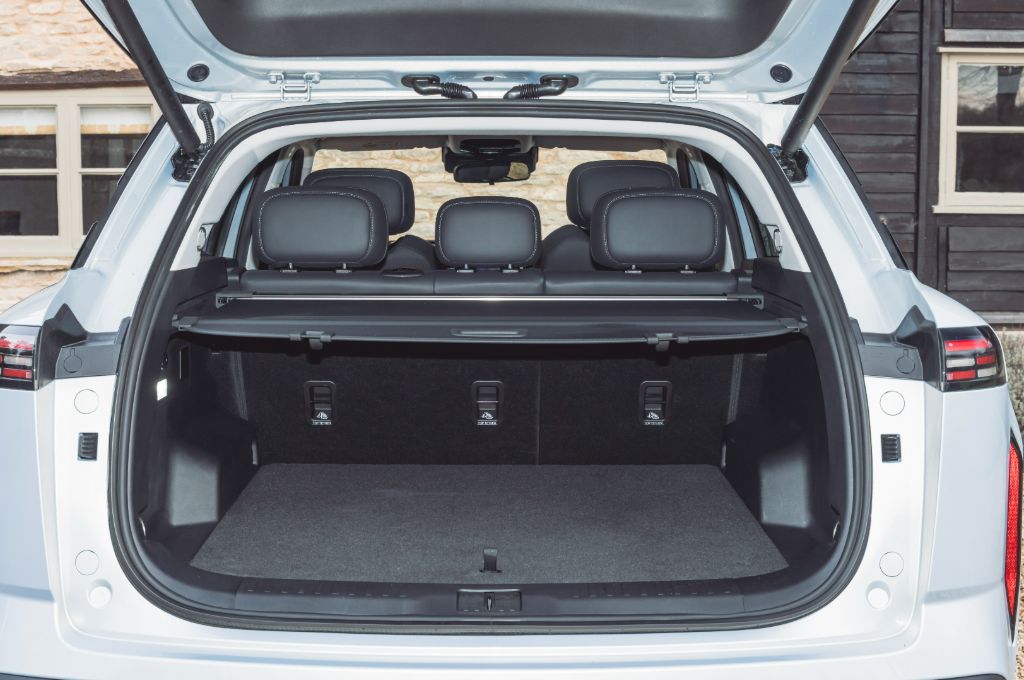
Up front, there’s a refrigerated centre cubby, and decent-sized doorbins and a glovebox, as well as a wireless phone charging pad, so it’s easy to keep your stuff secure and out of the way.
Towing fans will be pleased to know that you can tow with the JAECOO 7 SHS, but only a braked trailer of up to 1500kg.
Interior, Design/Styling and Technology
It feels nice enough in the JAECOO. There are some shiny, cheap-feeling plastics around the door area but it’s a simple, smart-looking design and the mixture of textiles and trims looks clean and modern.
As with Tesla and BYD, the main focus of the interior is on the big, 14.8-inch touchscreen that is your window to all of the car’s features. The system’s graphics and responses are really very impressive, although there are some weird quirks with the usability of the screen. If you activate Apple CarPlay, for instance, you lose all the climate control temperature buttons that are normally visible on the bottom of the screen. Which is really rather annoying. And the voice control wasn’t brilliant at figuring out what you wanted when we tried it a few times, so you won’t want to rely on that too often.
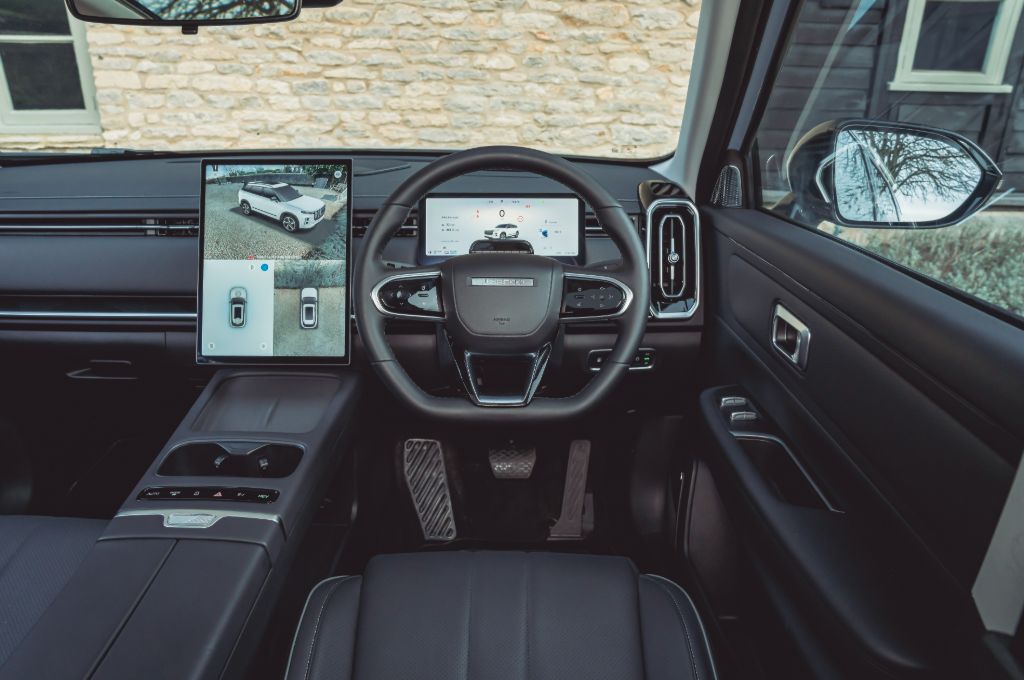
There are other oddities, too, like window rocker switches that you tilt forwards (ie. towards the nose of the car) to put the window… down? Weird.
Mind you, there is a digital readout behind the steering wheel for the speed and other essential driver’s information (unlike the Tesla Model Y and Volvo EX30), which is a welcome addition.
Overall, the interior fit and finish in the JAECOO 7 isn’t bad at all, and the equipment levels are a huge incentive. The plug-in hybrid is only offered in top-spec Luxury trim, which means that you get that panoramic sunroof, leatherette upholstery, heated and ventilated front seats, a head-up display, electric seat adjustment with four-way lumbar support, an eight-speaker Sony sound system, adaptive cruise control, keyless entry and a panoramic parking camera. And, of course, that big touchscreen with wireless Apple CarPlay and Android Auto, as well as in-built sat-nav.
Safety standards are good, too, with the JAECOO 7 being awarded a five star Euro NCAP crash safety rating.
Motors, Performance and Handling
The way the JAECOO drives isn’t going to be why you buy it, although it might be why you don’t. Will it do the job? Yes, it will, but of all the contenders in the family SUV class, the JAECOO is one of the most underwhelming to drive. The 1.5-litre, four-cylinder turbocharged petrol engine and the electric motor switch power smoothly enough, but the petrol engine is quite noisy, and the front wheels (and their 19-inch Kumho tyres) lose traction and spin all too easily in damp conditions. Ride comfort is also fussy and doesn’t settle until you’re at higher speeds, with the occasional heavy thud and shudder over potholes and a restless patter over coarse town roads. Added to that is the fact that there’s quite a lot of body lean, so you’re getting the ‘pass me the sick bag’ wallow of a big SUV, without the benefit of the languid, cushy ride comfort that you expect in return. The steering is very light in Normal mode or can be weighted up in Sport mode, and it’s consistent enough if very disconnected and short on feedback.
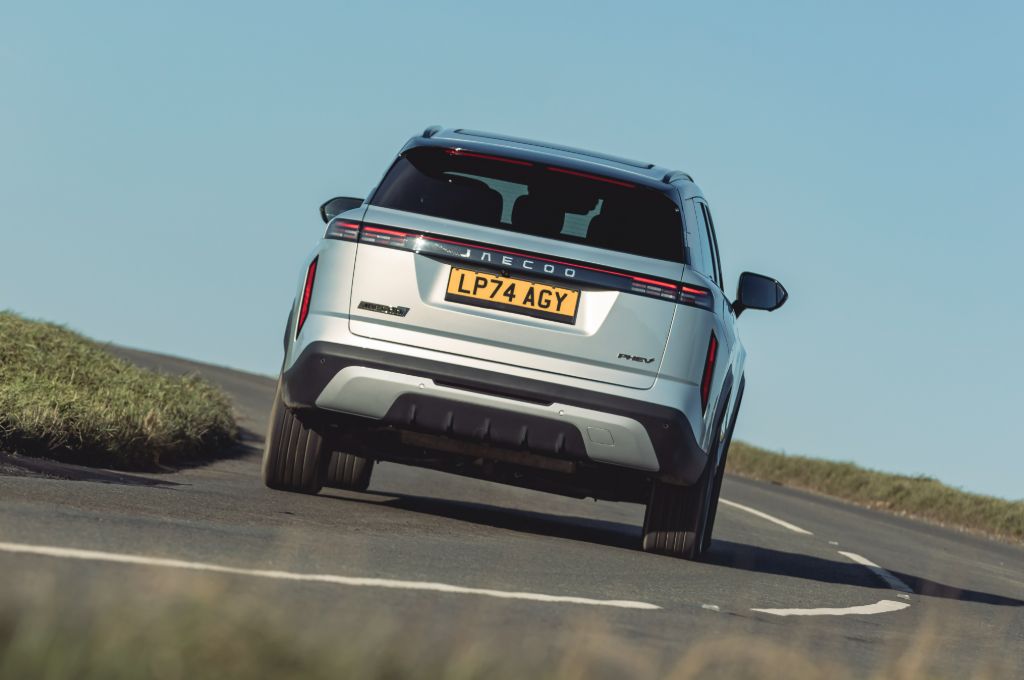
Yes, the 0-62mph time of 8.5 seconds is spry enough, and in EV mode – which you can select via a button on the console, or you can just leave it in hybrid mode so that the car decides when to prioritise electric- or petrol power – it’s quiet and smooth. But, when it comes to on-road manners, the JAECOO 7 is not a patch on the Hyundai Tucson, Ford Kuga, Toyota C-HR or BYD Seal-U, all of which are tidier in corners, and more comfortable the rest of the time, too.
Running Costs and Pricing
Value is where the JAECOO 7 really shines. At just over £35,000 for a plug-in hybrid with this much space and equipment, that will cover most daily journeys on electric power, and looks like the toothy lovechild of a Range Rover and Cadillac, it’s usefully cheaper than a lot of rivals.
You also get a seven-year, 100,000 mile warranty on the vehicle (eight years on the high voltage battery), and you can go and buy it from any of JAECOO’s 72 UK dealers; a number that’s set to grow quickly in coming years. We haven’t got final monthly finance figures, yet, but that’ll be a huge factor. Cash price is one thing, but the JAECOO will need to be seriously competitive on monthly prices if the company is to make the 12,000 sales it’s hoping to achieve for this year.
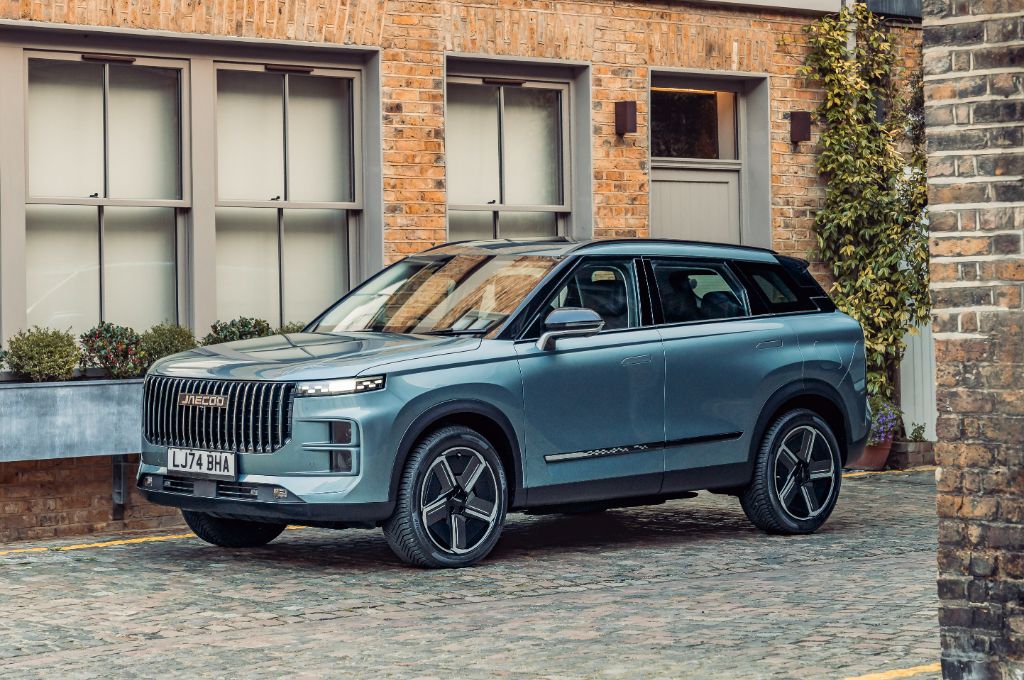
Verdict
The JAECOO 7 SHS is short on charm, and others are much better to drive, but it is good value, promises to deliver a decent electric range, and has serious on-road presence that’ll appeal to a lot of buyers. It’s also faster charging than most alternatives, and has that V2L tech, so there’s plenty going for it.
Even so, retail sales success will be dependent on those finance deals. If it can undercut its rivals by enough on monthly costs, the JAECOO 7 will win fans with its tech and lavish equipment, but without that value incentive, the 7 isn’t yet good enough to really rattle the established rivals.
Like the JAECOO 7 SHS Plug-in hybrid? Try these...
































